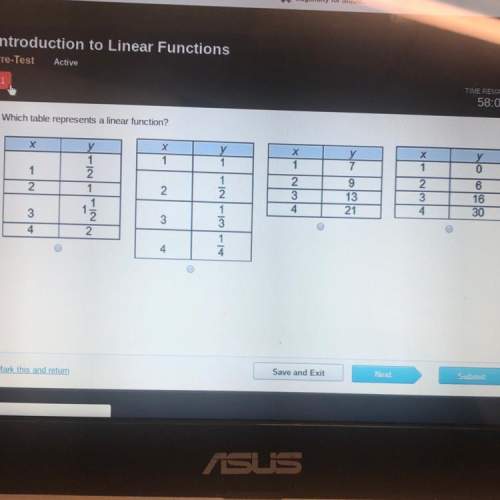
Mathematics, 29.10.2020 23:00 taliyahjhonson1
A pilot is flying a CRJ-900 from Phoenix, Arizona, to Louisville, Kentucky. The aircraft cannot take off or land if the temperature on the field is not within its operating limitations. The aircraft cannot operate if the temperature is at or below −40° F, or at or above 118° F.
Part A: Write an inequality to represent the temperatures the pilot can take off and land in. (2 points)
Part B: Describe the graph of the inequality completely from Part A. Use terms such as open/closed circles and shading directions. Explain what the solutions to the inequality represent. (4 points)
Part C: In June 1990, the temperature in Phoenix, Arizona rose to 122° F. Could the pilot have taken off on this day? Why or why not? (4 points)

Answers: 1


Other questions on the subject: Mathematics

Mathematics, 21.06.2019 15:30, bankzdown
Kevin is an insurance salesman. when he sells a policy, he makes 20 percent of the policy premium (p) up front; then each year the policy is active, he receives 15 percent of the original premium. which equation could be used to figure his total commission on a policy that has been active for five years? c=0.80p c=0.20p + 0.15p c=0.35p + 4(0.15) c=0.95p
Answers: 1

Mathematics, 21.06.2019 21:00, lollollollollol1
What is the missing statement in step 4? ? rts ? ? vtu and ? rtu ? ? vts ? rts ? ? rvs and ? rtu ? ? stv ? vrs ? ? vru and ? usr ? ? usv ? vur ? ? vus and ? uvs ? ? sru
Answers: 3

Mathematics, 21.06.2019 22:30, chrisdelreal86
Ron has 8 caps and 4 of his caps are blue. thes rest of his cap are red. how many of ron's caps are red
Answers: 1

Mathematics, 22.06.2019 01:00, SpeechlessZzz9920
For every corresponding pair of cross sections, the area of the cross section of a sphere with radius r is equal to the area of the cross section of a cylinder with radius and height 2r minus the volume of two cones, each with a radius and height of r. a cross section of the sphere is and a cross section of the cylinder minus the cones, taken parallel to the base of cylinder, is the volume of the cylinder with radius r and height 2r is and the volume of each cone with radius r and height r is 1/3 pie r^3. so the volume of the cylinder minus the two cones is therefore, the volume of the cylinder is 4/3pie r^3 by cavalieri's principle. (fill in options are: r/2- r- 2r- an annulus- a circle -1/3pier^3- 2/3pier^3- 4/3pier^3- 5/3pier^3- 2pier^3- 4pier^3)
Answers: 3
You know the right answer?
A pilot is flying a CRJ-900 from Phoenix, Arizona, to Louisville, Kentucky. The aircraft cannot take...
Questions in other subjects:






Business, 10.03.2021 23:10


English, 10.03.2021 23:10





